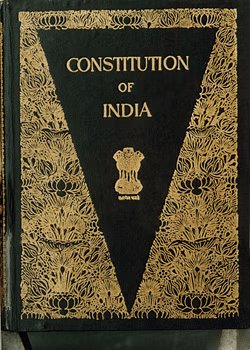Contemporary South Asia - Class 12
Contemporary South Asia refers to the region comprising the countries of India, Pakistan, Bangladesh, Nepal, Bhutan, Sri Lanka, and Maldives. It is a diverse region with a rich history, culture, and political landscape. Key features of contemporary South Asia: Diversity: The region is home to a diverse population with various languages, religions, and ethnicities. Economic development: South Asia is experiencing rapid economic growth, with India and China emerging as major economic powers. Political challenges: The region faces several political challenges, including poverty, inequality, and political instability. Regional cooperation: Efforts are being made to promote regional cooperation and integration among the countries of South Asia. Global influence: South Asia is increasingly influential on the global stage, particularly in terms of economics, culture, and politics. Key issues facing contemporary South Asia: Poverty and inequality: Many people in South Asia live in poverty, and there is a significant gap between the rich and the poor. Political instability: Some countries in the region face political instability, including conflicts, terrorism, and authoritarian rule. Environmental challenges: The region faces various environmental challenges, including deforestation, pollution, and climate change. Regional cooperation: Despite efforts to promote regional cooperation, there are still challenges in achieving effective collaboration among the countries of South Asia. Understanding contemporary South Asia requires a nuanced understanding of its diverse cultures, histories, and political landscapes. It is a region with immense potential, but also faces significant challenges that will continue to shape its future. সমসাময়িক দক্ষিণ এশিয়া বলতে ভারত, পাকিস্তান, বাংলাদেশ, নেপাল, ভুটান, শ্রীলঙ্কা এবং মালদ্বীপের দেশগুলিকে বোঝায়। এটি একটি সমৃদ্ধ ইতিহাস, সংস্কৃতি এবং রাজনৈতিক ভূদৃশ্য সহ একটি বৈচিত্র্যময় অঞ্চল। সমসাময়িক দক্ষিণ এশিয়ার প্রধান বৈশিষ্ট্যঃ বৈচিত্র্যঃ এই অঞ্চলটি বিভিন্ন ভাষা, ধর্ম এবং জাতিগতভাবে বৈচিত্র্যময় জনসংখ্যার আবাসস্থল। অর্থনৈতিক উন্নয়নঃ দক্ষিণ এশিয়ায় দ্রুত অর্থনৈতিক প্রবৃদ্ধি হচ্ছে, ভারত ও চীন প্রধান অর্থনৈতিক শক্তি হিসেবে আবির্ভূত হচ্ছে। রাজনৈতিক চ্যালেঞ্জঃ এই অঞ্চলটি দারিদ্র্য, বৈষম্য এবং রাজনৈতিক অস্থিতিশীলতা সহ বেশ কয়েকটি রাজনৈতিক চ্যালেঞ্জের মুখোমুখি। আঞ্চলিক সহযোগিতাঃ দক্ষিণ এশিয়ার দেশগুলির মধ্যে আঞ্চলিক সহযোগিতা ও সংহতকরণের জন্য প্রচেষ্টা চালানো হচ্ছে। বৈশ্বিক প্রভাবঃ বৈশ্বিক মঞ্চে দক্ষিণ এশিয়া ক্রমবর্ধমান প্রভাবশালী, বিশেষ করে অর্থনীতি, সংস্কৃতি এবং রাজনীতির ক্ষেত্রে। সমসাময়িক দক্ষিণ এশিয়ার প্রধান সমস্যাগুলিঃ দারিদ্র্য ও অসমতাঃ দক্ষিণ এশিয়ার অনেক মানুষ দারিদ্র্যের মধ্যে বাস করে এবং ধনী ও দরিদ্রের মধ্যে একটি উল্লেখযোগ্য ব্যবধান রয়েছে। রাজনৈতিক অস্থিতিশীলতাঃ এই অঞ্চলের কিছু দেশ দ্বন্দ্ব, সন্ত্রাসবাদ এবং কর্তৃত্ববাদী শাসন সহ রাজনৈতিক অস্থিতিশীলতার মুখোমুখি হয়। পরিবেশগত চ্যালেঞ্জঃ এই অঞ্চলটি বন উজাড়, দূষণ এবং জলবায়ু পরিবর্তন সহ বিভিন্ন পরিবেশগত চ্যালেঞ্জের মুখোমুখি। আঞ্চলিক সহযোগিতা-আঞ্চলিক সহযোগিতা বৃদ্ধির প্রচেষ্টা সত্ত্বেও, দক্ষিণ এশিয়ার দেশগুলির মধ্যে কার্যকর সহযোগিতা অর্জনের ক্ষেত্রে এখনও চ্যালেঞ্জ রয়েছে। সমসাময়িক দক্ষিণ এশিয়াকে বোঝার জন্য এর বৈচিত্র্যময় সংস্কৃতি, ইতিহাস এবং রাজনৈতিক দৃশ্যপটের একটি সূক্ষ্ম বোঝার প্রয়োজন। এটি এমন একটি অঞ্চল যেখানে প্রচুর সম্ভাবনা রয়েছে, তবে উল্লেখযোগ্য চ্যালেঞ্জগুলিরও মুখোমুখি হয়েছে যা এর ভবিষ্যতকে রূপ দিতে থাকবে।
English
Last updated
Wed, 27-Nov-2024



















